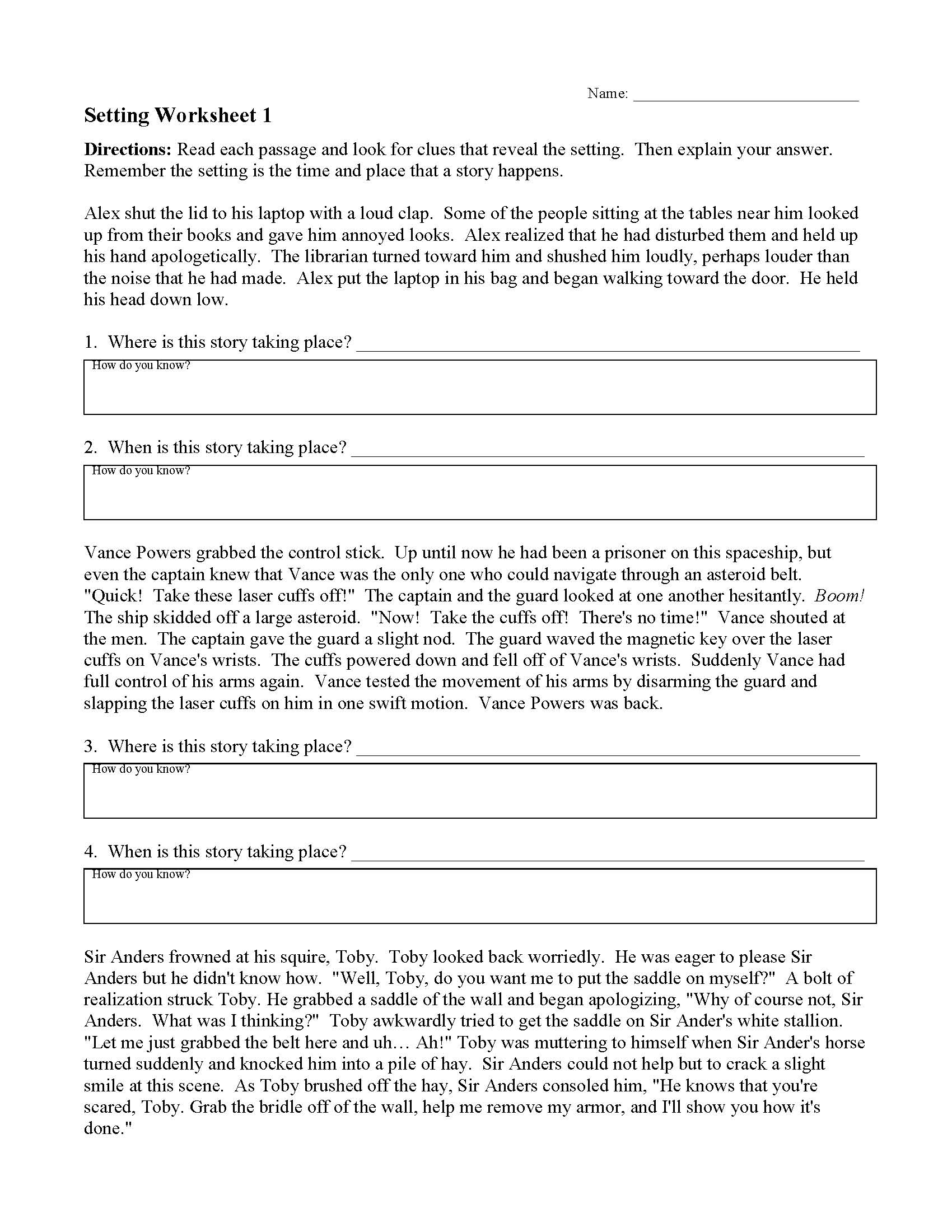
Looking for a worksheet to help students practice identifying setting? In this double-sided worksheet, students read short stories. They determine the setting based on textual details and explain their answers. It has five passages and ten problems. This worksheet gives students great practice with determining story settings. Suggested reading level for this text: Grade 2-6.







 into the answer key." />
into the answer key." />
 button for the online version of Setting Worksheet 1. Press this button and try the online activity." />
button for the online version of Setting Worksheet 1. Press this button and try the online activity." />
Based on the readability scores for this text, Setting Worksheet 1 is recommended for students reading at grade levels 2 - 6. This text should be accessible to any student reading at a 2nd grade reading level or higher.
R.3 - Analyze how and why individuals, events, and ideas develop and interact over the course of a text.
RL.K.3 - With prompting and support, identify characters, settings, and major events in a story.
RL.1.3 - Describe characters, settings, and major events in a story, using key details.
RL.2.3 - By the end of year, read and comprehend informational texts, including history/social studies, science, and technical texts, in the grades 2–3 text complexity band proficiently, with scaffolding as needed at the high end of the range.
RL.4.3 - Describe in depth a character, setting, or event in a story or drama, drawing on specific details in the text (e.g., a character’s thoughts, words, or actions).
RL.5.3 - Compare and contrast two or more characters, settings, or events in a story or drama, drawing on specific details in the text (e.g., how characters interact).
RL.7.3 - Analyze how particular elements of a story or drama interact (e.g., how setting shapes the characters or plot).
RL.11-12.3 - Analyze the impact of the author’s choices regarding how to develop and relate elements of a story or drama (e.g., where a story is set, how the action is ordered, how the characters are introduced and developed).